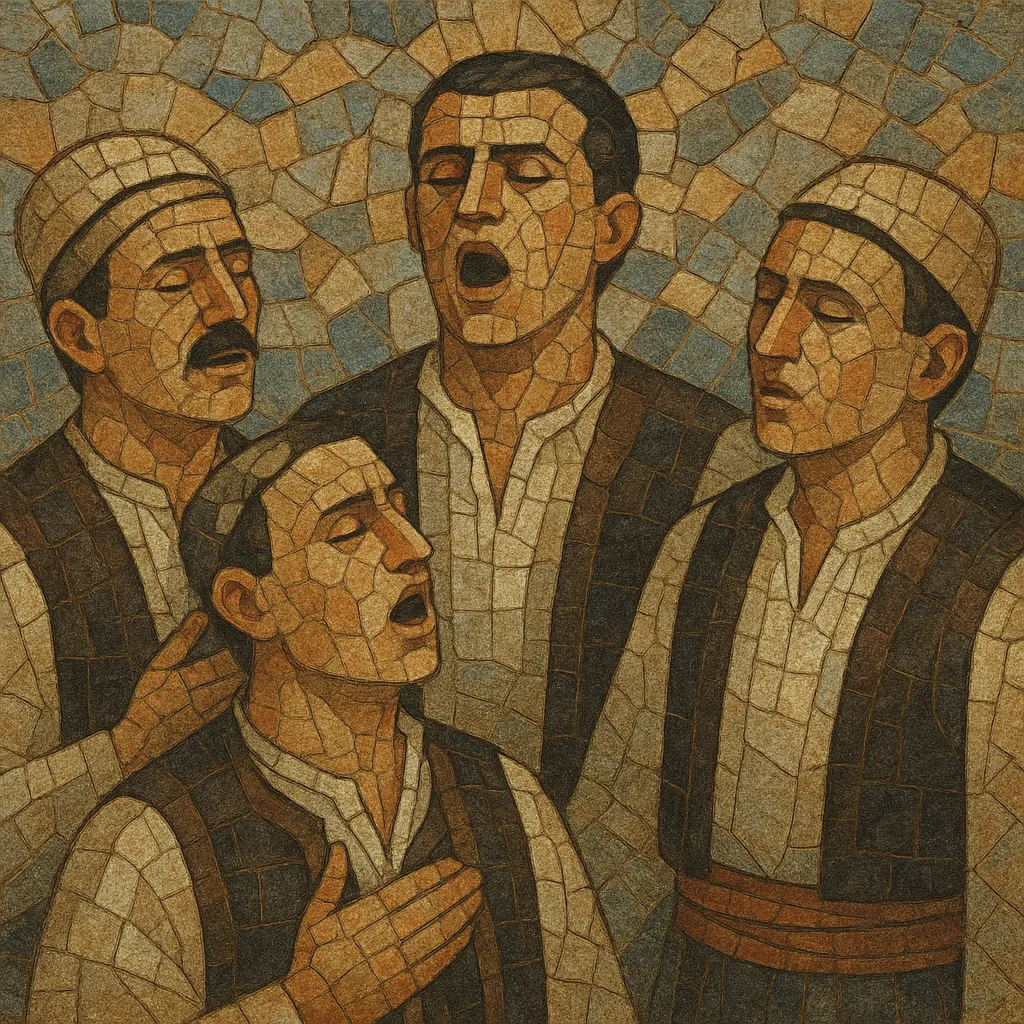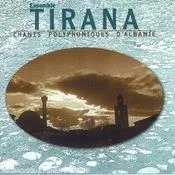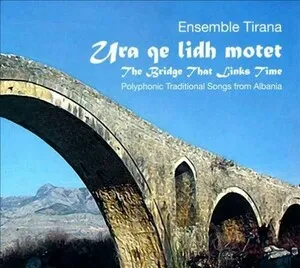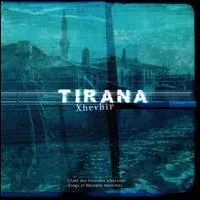Tosk polyphony is a traditional a cappella vocal style from southern Albania (the Tosk-speaking regions) that belongs to the broader Albanian iso‑polyphonic tradition.
It is performed by small ensembles who weave a lead melody with one or two answering voices over a sustained group drone called the “iso.” The sonic result is rich, buzzing harmony built from close intervals, open fifths, and modal scales that recall medieval and Byzantine liturgical color.
Unlike the rougher, more forceful Lab style, Tosk polyphony is typically smoother and more lyrical, with a nasal yet gentle timbre and a preference for two- and three‑part textures plus the iso. Themes include love, weddings, pastoral life, heroic ballads, and laments, and pieces can be in free rhythm or in simple duple meters, often ending with striking unison cadences.
Tosk polyphony developed in the Tosk-speaking regions of southern Albania (notably around Gjirokastër, Përmet, Lunxhëria, and Myzeqe). While written documentation is scarce before the modern era, its modal language, multipart structure, and communal functions suggest medieval roots, with possible inheritance from older Balkan multipart singing practices and proximity to Byzantine chant traditions.
Travelers, folklorists, and early ethnomusicologists of the 19th and early 20th centuries began describing the distinctive Albanian iso-drone and multipart leadership roles (commonly: marrës/lead, kthyes/responding voice, and the iso/drone). Mid‑20th‑century state cultural institutions in Albania undertook systematic collection, recording, and ensemble training, helping codify regional variants (Tosk vs. Lab) and bringing village ensembles to national stages and radio.
Since 1968, the National Folklore Festival in Gjirokastër has served as a key showcase, standardizing stage presentation and encouraging interregional exchange while preserving the core a cappella practice. Albanian iso‑polyphony (including the Tosk style) was proclaimed by UNESCO a Masterpiece of the Oral and Intangible Heritage of Humanity in 2005 and inscribed on the Representative List in 2008, boosting documentation, transmission programs, and international touring.
Today, Tosk polyphony lives in village ceremonies, weddings, and memorials, and on stage through regional ensembles and women’s groups. Some contemporary projects (e.g., collaborations with saze instrumentalists or world‑music productions) adapt Tosk repertoire while retaining the iso-drone backbone. Community transmission—learning by ear within families and local groups—remains central to its vitality.





%2C%20Cover%20art.webp)

